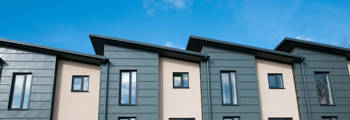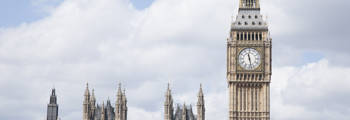
23/07/2018
Do you own/manage a high rise property?
It's time for a risk assessment!
Following the Grenfell disaster, a Government consultation has been announced on banning the use of combustible cladding on the external walls of high-rise residential buildings
While there are questions over whether or not the scope of the overall consultation is sufficient (by not fully examining the implications of using combustible cladding in non-residential buildings), it is likely that as a result of this consultation (and previous reviews such as the Hackitt Review) that new legislation will be forthcoming governing the use of cladding on high-rise buildings.
Therefore, ALL organisations that own high-rise buildings – including housing associations, public bodies, commercial landlords and institutional investors – should take time to examine both the cladding on their buildings, and their statutory responsibilities within current and future building and safety regulations, to ensure that they are compliant.
If your building has cladding, should it be replaced?
Whatever the outcome of the consultation, organisations are advised to carry out a fire risk assessment of their high-rise buildings to establish whether or not the cladding is compliant with current Building Regulations and whether the cladding represents a risk to the health and safety of the building's occupants. In addition, irrespective of whether the cladding is compliant with the requirements of the Building Regulations, organisations should assess whether the presence of combustible cladding represents a reputational risk which the organization should avoid.
Testing and removal of cladding
There could be unforeseen consequences of testing and/or removing cladding and other related building structures – and therefore the process needs to be managed carefully. In some cases, experts have warned that the removal of cladding elements may result in the increased risk of fire spreading should a fire occur while testing is being carried out. In addition, this form of cladding is a very effective insulator, and the removal and replacement of the cladding could adversely affect the energy efficiency and thermal performance of the building resulting in increased energy costs and/or a breach of energy performance regulations.
Cost liability
A critical question is who is liable for the cost of recladding a building if the combustible cladding needs to be replaced? Will costs be recoverable from the original contractors, designers or consultants? Or will the costs simply fall on the tenants or current owners? Organisations may need to decide whether or not to proceed with replacement works at their own risk, or wait until such a time as cost liability issues have been resolved. Rules and regulations within the sector also harbor considerable ambiguity and will therefore require careful legal consideration before any decision to proceed with litigation or other legal action.
Bevan Brittan Pre-Consultation Survey
The consultation asks some wide-ranging questions, and - with the process closing on 14 August - there is not a lot of time to respond. Bevan Brittan is undertaking a pre-consultation survey in order to gain input from our clients and colleagues. Please could you take 5 minutes to complete the questions in our survey.
